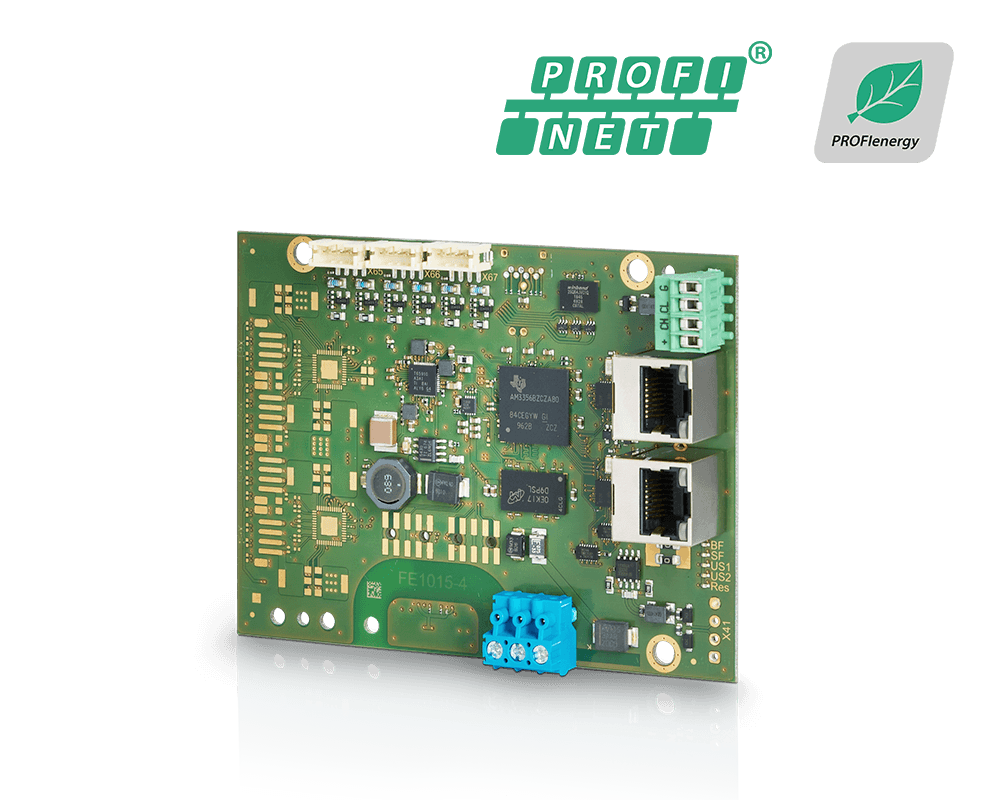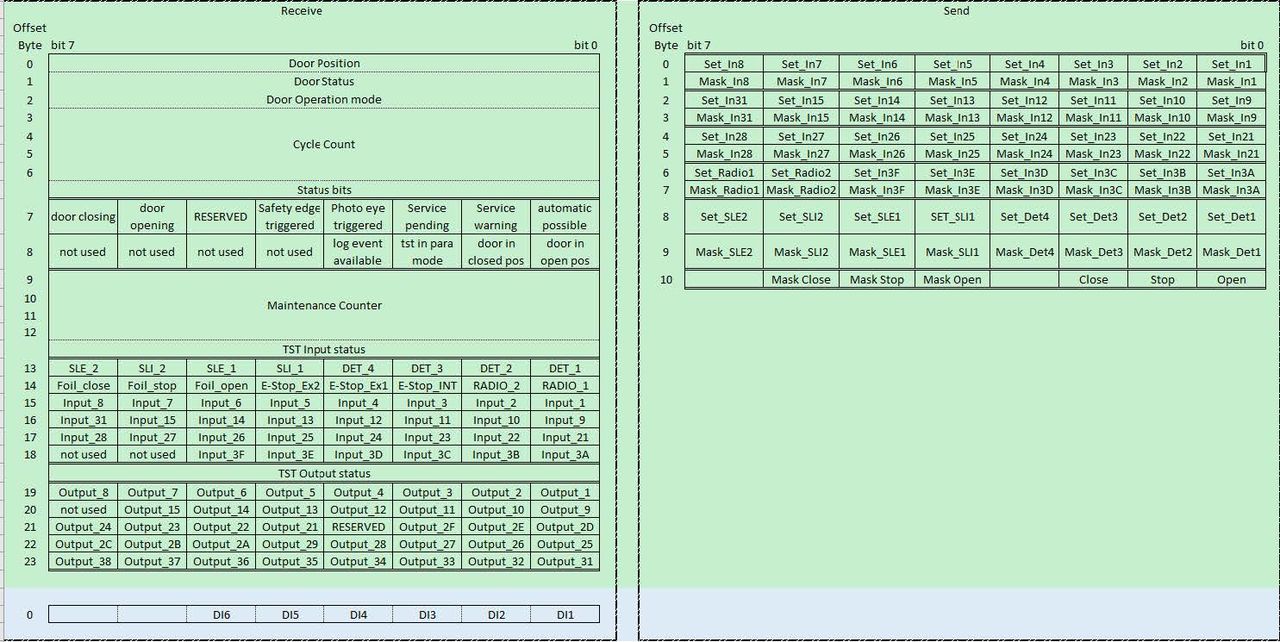The connected future
The spread of Industry 4.0 is in full swing with focus on digital transparency and harmonization of all processes to increase efficiency. With our RCCA communication modules, your processes in the networked world can be displayed, holistically.
WHY NETWORK YOUR PRODUCTION OR PROCESSES?
Increased productivity, more comfort, less effort: it's worth networking doors with manufacturing processes or intralogistics procedures.
The networked factory and the networked building are already a reality today. We help you with the last mile to capture the entire process chain and make your applications “future ready”.
WHERE CAN WE HELP YOU?
Even now there are various advantages of networking that have become established:
Predictive Maintenance
- The systems are maintained in time before failure, but run for as long as possible until then
- Intelligently planned replacement of parts
- Reduction of technical service on site through precise planning
- Reducing the risk of unexpected failures
- Securing sales, because unplanned downtimes cost money
- Improving workforce utilization
AutomatiON USING ROBOTICS
- Intelligent production processes where robotics handle production at high speed
- Doors as separating protective devices support robotics and improve efficiency
- Reducing human interaction
- Costs and processes are thus optimized
Intelligent FACILITY management
- Buildings are managed through data and sensors
- A holistic view improves the efficiency of processes
- Cost reduction through intelligent energy management
You need more information? Please contact us via sales@feig.de
Door controls become network-capable
with the communication module TST RCCA-A

With the modern communication module TST RCCA-A from FEIG ELECTRONIC, door controls become an integral part of intelligent and automated systems.
Thanks to the PROFINET interface of the TST RCCA-A module, the FEIG controls can be integrated almost anywhere. Doors can be controlled by a higher-level controller via bidirectional communication. The door control also bundles the data from the connected sensors and transmits status, diagnostic or error messages to the central control.
The integrated IRT switch enables additional network participants to be connected directly to the door control and thus easy cabling of additional Profinet participants.
IRT stands for “Isochronous Real Time” and enables the use of the TST RCCA-A in networks with real-time communication.
Looking for more comfort and security features? Look at our communication module in the variants -B -C and -D
The perfect communication partner for the automation industry: the TST RCCA-A. Discrete wiring is being replaced by digital integration. This enables highly flexible integration into the on-site manufacturing processes.
Downloads and further information
Whether technical data, certificates or descriptions, you will find all relevant information about the TST RCCA-A here.
Vendor ID
Name: FEIG ELECTRONIC GmbH
Vendor ID (DECIMAL): 1373
Vendor ID (HEX): 0x055D
Minimum hardware and software requirements for TST RCCA-A
Hardware
- Door control of the TST FUx class with current software as of Vxx-08.xx
- ProfiNet®-capable, higher-level PLC (e.g.: SIEMENS S7-1200)
Software
- RCCA device description file, available via download area
- Access to the development environment of the higher-level controller (Recommendation: SIEMENS TIA Portal V15.1 or newer)
Module list of transmitted data
The following data is exchanged between the PLC and the door control:

- Download: Module Lists
Modulliste_RCCA-A.xlsx 16 KB
Application instructions
Technical Data
- Data Sheet
Data_sheet_Controller_Accessories_TST_RCCA-A.pdf 331 KB - Assembly Instructions
TST_RCCA-A_Assembly_Instructions_V2.0.pdf 4 MB
Display of communication data
- Example of displaying the communication data of a SIEMENS PLC S7-1200 in TIA Portal V15.1
Application_Example_for_using_an_RCCA-A_with_HMI_EN.pdf 274 KB
Network Topologies
- Examples of network topologies in a Siemens S7 network
RCCA_Network_Topology_EN.pdf 267 KB
Module library
- Module library for the generic use of the TST RCCA-A in the SIEMENS TIA Portal
Feig_RCCA_V1.1.zip 614 KB - Module library for the generic use of the TST RCCA-A in the SIEMENS TIA Portal with HMI
Feig_RCCA_incl._HMI_V1.1.zip 742 KB
Application Example: Single Drive
- Application example single drive without HMI
Application_Example_single_Drive_Without_HMI_EN.pdf 267 KB - Example project with a SIEMENS PLC S7-1200 in TIA Portal V15.1
S7-1200_RCCA_A.zip 2 MB
Application Example: Setting/reading IOs
- Application description for setting virtual inputs and reading out the output status of the door controller with TST RCCA and a SIEMENS PLC S7-1200
Application_Example_RCCA-A_Interaction_with_TST.pdf 291 KB - Example project with a SIEMENS PLC S7-1200 in TIA Portal V15.1
S7-1200_RCCA_A_Interact_with_TST.zip 3 MB
Application Example: Using the DIs
- Application description for reading out the digital inputs of the TST RCCA-A with a SIEMENS PLC S7-1200
Application_Example_RCCA-A_Digital_Inputs_EN.pdf 275 KB - [Translate to English:] Beispiel-Projekt mit einer SIEMENS SPS S7-1200 im TIA Portal V15.1
S7-1200_RCCA_A_Digital_Inputs.zip 3 MB
Application Example: HMI
- Application description for control, display and evaluation via HMI
Application_Example_for_using_an_RCCA-A_with_HMI_EN.pdf 274 KB - [Translate to English:] Beispiel-Projekt mit einer SIEMENS SPS S7-1200 im TIA Portal V15.1
S7-1200_RCCA_A_Interact_with_TST_incl._HMI.zip 8 MB
Frequently Asked Questions (FAQ)
Load the GSDML file (available as a free download on this support website) into your development environment.
- Make sure that the correct hardware version (RCCA-A/B/C/D) has been configured. The hardware version is reported in the TIA portal via "online" → "accessible devices".
- Check the Profinet connection between the RCCA and the higher-level controller. (see "Network topologies" on the support website)
- Ensure that the RCCA module is supplied with power.
- Check the device name of the target device. On delivery, this is "tst-rcca".
- Check the power supply to the RCCA.
- Check parameter P.804, which must be parameterized to "1".
- Check the correct installation of the eight-pole connection cable on the underside of the RCCA when it is de-energized.
- Make sure that the door control unit does not report an error and can be operated in automatic mode.
- Make sure that both the bit for direction or stop and the corresponding mask are set for a move command. (see "Module list of transmitted data" → "Send" → Byte 10 on the support website) To simplify communication, we recommend using the "Feig RCCA [incl. HMI] V1.1" library, download from this support website.
Any more questions?
We 're more than happy to help you with inquiries and other concerns. Simply contact our support or sales department.

